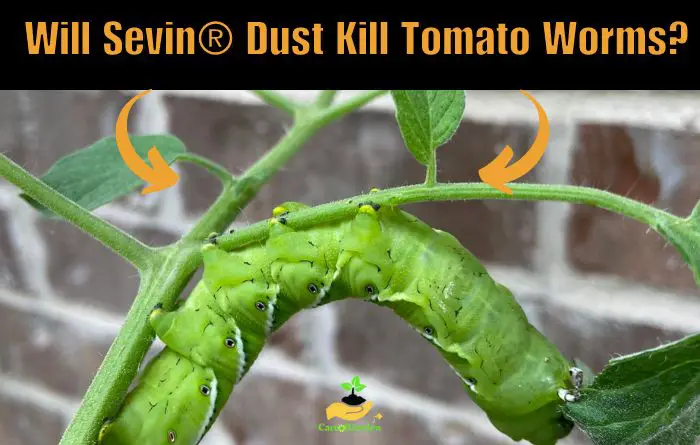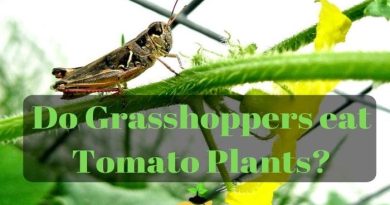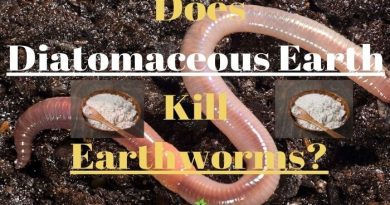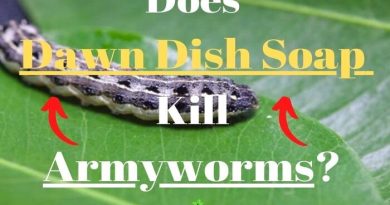Will Sevin Dust Kill Tomato Worms? (Here Is The Answer)
If you’re a gardener, you know how frustrating it can be when tomato worms invade your tomato plants. One popular solution to this problem is to use Sevin dust, a chemical pesticide that is widely available at garden centers and online. But will Sevin dust really kill tomato worms?
The answer is yes, Sevin dust can be an effective way to control tomato worms. This pesticide contains carbaryl, which is toxic to many types of insects, including tomato worms. When applied to your tomato plants according to the label instructions, Sevin dust can kill tomato worms and prevent them from causing further damage. However, it’s important to use this pesticide with caution, as it can also harm beneficial insects like bees and ladybugs.
Effectiveness of Sevin Dust on Tomato Worms
Using Sevin Dust can be a great way to get rid of tomato worms, but it’s important to use it correctly. Sevin Dust has an active ingredient called carbaryl that affects the nervous system of insects.
Once the Sevin Dust comes into contact with the tomato worm, it will begin to affect the worm’s nervous system, causing it to become paralyzed and eventually die. This process can take anywhere from a few hours to a few days, depending on the size of the worm and the amount of Sevin Dust applied.
It’s important to note that Sevin Dust is not selective and can harm beneficial insects as well as pests. Therefore, it should be used sparingly and only when necessary. Additionally, it’s important to follow the instructions on the label carefully and wear protective clothing when applying Sevin Dust.
Overall, Sevin Dust can be an effective way to control tomato worms when used correctly. However, it’s important to consider the potential harm it can cause to beneficial insects and to use it sparingly and responsibly.
| Sevin Dust on Tomato Worms | Effectiveness |
|---|---|
| Early Stage Worms | Highly effective |
| Mature Worms | Moderately effective |
| Egg Stage | Not effective |
| Preventative Measure | Somewhat effective |
| Reapplication | Necessary after heavy rain or every 7-10 days |
| Time of Day | Apply in the early morning or late afternoon to avoid harming helpful pollinators. |
| Safety Precautions | Always wear gloves, long sleeves, and pants when using Sevin dust to avoid skin contact. |
https://www.gardentech.com/products/sevin/-/media/53BA498D38B04EBEA3B7B5D4C5DCFC37.ashx
How to Use Sevin Dust to Eliminate Tomato Worms
When using Sevin Dust to control tomato worms, it is important to apply it correctly to ensure maximum effectiveness.
If you want to use Sevin Dust to get rid of tomato worms, follow these simple steps:
- Check your tomato plants for signs of tomato worms. They’re usually green with stripes on their bodies.
- Wear protective clothing like gloves, long-sleeved shirts, and pants to avoid touching the Sevin Dust.
- Sprinkle Sevin Dust on the affected tomato plants, making sure to cover both sides of the leaves. Follow the instructions on the label.
- Apply Sevin Dust in the early morning or late evening when the tomato worms are most active.
- Repeat the application every 7 to 10 days or as needed until the worms are gone.
- Clean up by washing your hands and tools with soap and water. Keep Sevin Dust out of reach of children and pets.
It is important to note that Sevin Dust is toxic to bees and other beneficial insects, so it should not be applied when these insects are present.
Additionally, Sevin Dust should not be used on plants that are in bloom or near harvest time, as residue from the dust can remain on the fruit and be ingested by humans.
You can effectively control tomato worms with Sevin Dust if you follow the steps above, while minimizing harm to beneficial insects and ensuring the safety of your harvest.
Safety Precautions when using Sevin Dust
To use Sevin Dust safely and effectively, follow these important safety precautions:
- Wear protective clothing: Put on gloves, long-sleeved shirts, and pants to avoid touching the Sevin Dust with your skin.
- Follow the label instructions: Read and follow the instructions on the Sevin Dust label carefully. Use only the recommended amount and apply it only to the areas specified on the label.
- Use in a well-ventilated area: Apply Sevin Dust in a place with good airflow to avoid breathing in the dust.
- Store safely: Keep Sevin Dust in a safe place away from kids and pets. Keep it in its original container and make sure the lid is tightly closed.
- Dispose of properly: Follow the instructions on the label when disposing of Sevin Dust. Don’t pour it down the drain or throw it in the trash. Contact your local waste disposal facility for proper disposal instructions.
- Wash up: After using Sevin Dust, wash your hands, tools, and protective clothing with soap and water. Wash your protective clothing separately from other laundry.
By following these safety precautions, you can use Sevin Dust safely and effectively to control pests in your garden.
How Sevin Dust Works on Tomato Worms?
When it comes to controlling pests in your garden, you want a product that’s effective and easy to use. Sevin Dust is a popular insecticide that’s been used by gardeners for decades to control a wide range of pests, including tomato worms.
Sevin Dust contains the active ingredient carbaryl, which is a broad-spectrum insecticide that works by disrupting the nervous system of insects. When applied to plants, Sevin Dust kills insects on contact and provides residual control for up to several days.
One of the benefits of Sevin Dust is that it’s easy to apply. The product comes in a powder form that can be dusted onto plants using a shaker can or a dust applicator. Sevin Dust is also rainproof, so you don’t have to worry about it being washed away during a rainstorm.
However, it’s important to use Sevin Dust according to the label directions. Overuse of the product can harm beneficial insects, such as bees and butterflies, and can also lead to the development of pesticide-resistant pests.
Overall, Sevin Dust can be an effective tool in controlling tomato worms and other garden pests. By following the label directions and using the product responsibly, you can help protect your plants and maintain a healthy garden.
| Type of Tomato Worm | Sevin Dust Effectiveness |
|---|---|
| Tomato Hornworms | Highly effective |
| Tobacco Hornworms | Highly effective |
| Fruitworms | Moderately effective |
| Cutworms | Moderately effective |
| Armyworms | Moderately effective |
| Pinworms | Not effective |
| Tomato Hornworm Eggs | Not effective |
| Tomato Fruitworm Eggs | Not effective |
| Tomato Cutworm Eggs | Not effective |
| Armyworm Eggs | Not effective |
Is Sevin Dust safe for beneficial insects?
Sevin Dust is not selective and can harm beneficial insects such as bees and butterflies, as well as pests. Therefore, it’s important to use it sparingly and only when necessary.
When using Sevin Dust, it’s recommended to follow the instructions on the label carefully and wear protective clothing. Additionally, it’s important to consider the potential harm it can cause to beneficial insects and to use it responsibly.
Alternatives to Sevin Dust for Killing Tomato Worms
If you prefer not to use Sevin dust to control tomato worms, there are several alternatives that you can try. Here are a few options to consider:
Bacillus thuringiensis (Bt)
Bt is a natural bacteria that can be used to control tomato worms. It works by producing a toxin that specifically targets the digestive system of caterpillars like tomato worms. When consumed, the toxin causes the caterpillar to stop eating and eventually die.
Bt is available in various formulations, including sprays, powders, and granules. It is considered safe for humans, pets, and beneficial insects, so you don’t have to worry about harming other creatures in your garden.
Neem oil
Neem oil is another natural alternative to Sevin dust. It is derived from the seeds of the neem tree and contains compounds that repel and kill tomato worms. Neem oil can be applied as a spray to the leaves and stems of tomato plants.
Neem oil is also safe for humans, pets, and beneficial insects. However, it can be harmful to bees if applied directly to flowering plants, so be sure to avoid spraying when bees are present.
Handpicking
If you only have a few tomato plants, handpicking tomato worms can be an effective method of control. Simply inspect your plants regularly and remove any caterpillars that you find. Be sure to wear gloves to protect your hands from the spines on the caterpillar’s body.
Handpicking may not be practical for larger gardens, but it can be a good option if you only have a few plants to care for.
Overall, there are several alternatives to Sevin dust that you can use to control tomato worms. Experiment with different methods to find the one that works best for you and your garden.
Conclusion
In conclusion, Sevin dust can effectively kill tomato worms. However, it is important to use it correctly to ensure that it is safe for your plants and the environment.
Here are some key takeaways to keep in mind:
- Sevin dust is a broad-spectrum insecticide that can kill a wide range of pests, including tomato worms.
- It works by interfering with the nervous system of insects, causing paralysis and death.
- Sevin dust is available in both powder and liquid formulations, and can be applied directly to the leaves and stems of tomato plants.
- When using Sevin dust, it is important to follow the instructions carefully, and to wear protective gear such as gloves and a mask to avoid inhaling the dust.
- It is also important to avoid using Sevin dust on windy days, as the dust can easily drift and harm beneficial insects such as bees.
Overall, Sevin dust can be an effective tool in controlling tomato worms, but it should be used with caution and in moderation to avoid harming other beneficial insects and the environment.




